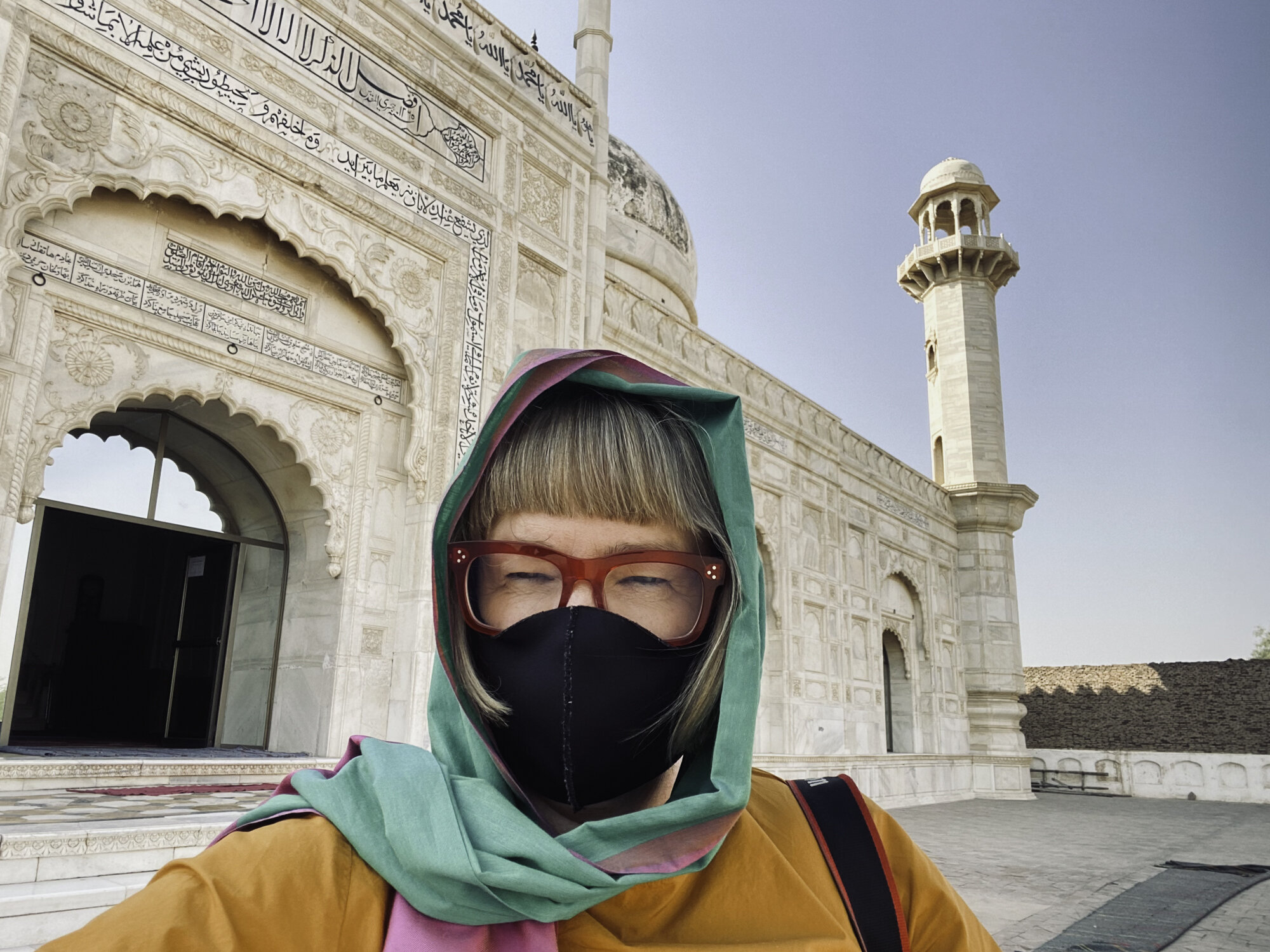Postcards from Pakistan
Postcard from Abbasi Mosque, Cholistan Desert
From the top of one of the bastions of Derawar Fort you can see the Mosque’s three white domes shining through the afternoon haze. The Mosque was built in 1849 by Nawab Bahawal Khan Abbasi. Covered in white marble the mosque is symmetrical with minarets and decorative arches and Islamic calligraphy. The design was supposed to have been inspired by either the Shah Jahan’s Moti (Pearl) Mosque in Agra or the Moti Mosque at the Red Fort in Dehli.
We had time for a quick stop to see the mosque before continuing our journey. We took off our shoes and I covered my head. Inside the courtyard it was hot in the afternoon sun and very quiet. Time for a moment of quiet contemplation.
Postcard from Derawar Fort, Cholistan Desert - a fortress of truly towering proportions
We leave Bahawalpur behind and travel another 100 kilometres into the Cholistan Desert. Derawar Fort rises up out of the desert and the colour of the surrounding sand is matched by the millions of small, narrow bricks that make up the fort.
40 bastions standing 30 metres tall, 1500 metres of wall make up the square shape of the fort. Each bastion is decorated with intricate brick work patterns. As you get closer you can’t believe the scale of the building, seemingly built in the middle of nowhere.
When the Fort was built in the 9th century it stood next to the Hakra River and was a defensive point to protect valuable water resources on caravan and pilgrim routes across the desert. It was built for Rai Jajja Bhati, a Hindu king from Jaisalmer, India. The fort changed hands many times and in the 18th century it became the property of the Nawabs of Bahawalpur, who rebuilt it in 1732.
Inside the Fort are many buildings, most in a poor state of repair. The Bahawalpur Department of Archaeology is working to restore parts of the fort but more work and funds are required. We visited one bastion where the structure has been repaired and new frescoes painted but it is a shame that the original frescoes are not protected.
The fort is currently on the tentative list of sites to be included on the UNESCO World Heritage List. UNESCO defines cultural and natural heritages as “irreplaceable sources of life and inspiration…our touchstones, our points of reference, our identity”. Derawar Fort certainly meets that definition.
Gateway into the fort
Curved, steep driveway from main gate - excellent defences
Panorama inside the fort
Bastion currently under restoration
Walkway up to see the bastion restoration work - no railing, long drop down - don’t think I’d like to work on the scaffolding
Restoration inside almost complete
Ceiling detail
Frescoes - before and after
Wall detail
View from the bastion - where the irrigation stops the desert immediately starts
Inside the fort - years of restoration work required
Inside the fort
Inside the fort
Under the dust a hidden treasure
Parts of the buildings look beyond repair
Painted ceiling
Bastion brickwork
Time to leave to go to our next stop - decided against the camel to get there
Cars are a much better option against the heat and dust































